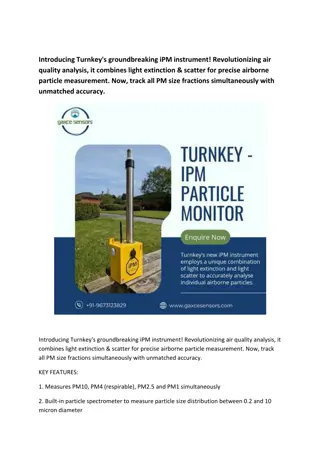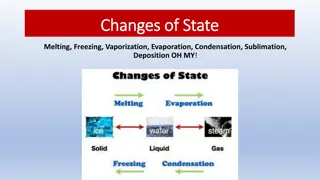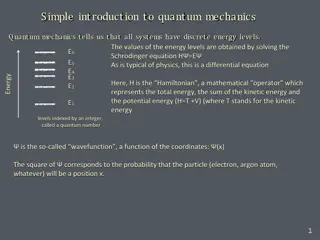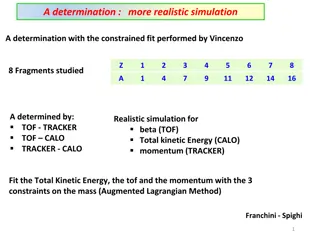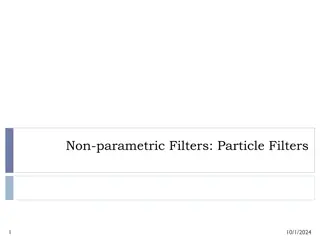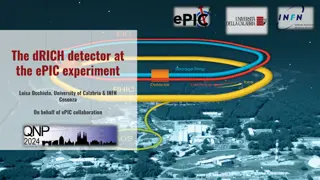Analysis of E/p Position Changes in Particle Reconstructed Energy Over Time
In the analysis of E/p position changes for electron, proton, and helium particles over time, a noticeable increase in the E/p peak position for electrons was observed, while the E/p peak positions for protons and helium remained relatively stable, especially for EnergyD. The changes observed after a specific period may be attributed to updates in the Ecal calibration. Potential reasons for these differences include Ecal performance variations and reconstructed rigidity differences between electron and hadron particles. Further investigation into the mass of helium over time is suggested to assess rigidity differences.
Download Presentation

Please find below an Image/Link to download the presentation.
The content on the website is provided AS IS for your information and personal use only. It may not be sold, licensed, or shared on other websites without obtaining consent from the author. Download presentation by click this link. If you encounter any issues during the download, it is possible that the publisher has removed the file from their server.
E N D
Presentation Transcript
E/p v.s. time Does ECAL change? Jie Feng
selection Sample: 20~80 GeV electron, proton and helium Period: 07.11 11.13 (29 months) Reconstructed energy: EnergyE, EnergyA, EnergyD
Electron E/p position 2% increase of E/p peak position during this two years is observed for all kinds of reconstructed energy. Something has changed after 07.13.
Electron E/p position 3 months / point 2% increase of E/p peak position during this two years is observed for all kinds of reconstructed energy. The change after 07.13 is smoothed.
Proton E/p position (1) Proton E/p peak position is quite stable with time, especially for EnergyD The step around 07.13 may be due to the update of Ecal calibration.
Proton E/p position (2) Proton E/p peak position is quite stable with time. The step around 07.13 may be due to the update of Ecal calibration.
Helium E/p position (1) Helium E/p peak position is quite stable with time, especially for EnergyD The step around 07.13 may be due to the update of Ecal calibration.
Helium E/p position (2) Helium E/p peak position is quite stable with time. The step around 07.13 may be due to the update of Ecal calibration.
Summary Before 07.13 E/p of electron increases with time. E/p of hadron does not increase with time.
Potential Reasons Ecal performance difference between EM showers and hadronic showers. Reconstructed rigidity difference between that of electron and that of hadron. The largest difference between electron and helium is the mass. Synchrotron radiation?
To do Check the mass of Helium v.s. time to check rigidity. Rig_L1/Rig_L9 v.s. time to see electron radiation.
Helium mass with time 8~10 GV Helium are selected. Beta is measured by RICH. Mass is stable before 07.13. Something has changed since 07.13. The peak shifts by 3% at around 07.13. ? =???????? ?
Beta with time 8~10 GV/c Helium are selected. Beta is measured by RICH. shifts by ~-0.05%, by ~- 6% and mass by 3%. For the same rigidity, this demonstrates that we observes some problem for rigidity or rich.
Synchrotron radiation? Rigidity_L1/Rigidity_L9-1 does not describe the increase of the synchrotron radiation.
Conclusion Before 07/13: Helium mass rigidity stable with time ECAL is stable with time EnergyD/p of helium After 07/13: Something unknown has happened: 1) ECAL equalization change? 2) Tracker or RICH change?
Possibility to measure the rigidity performance with Helium mass. -Discussion with F.Barao (?? ?? ?)2+(?2?? ?)2= ( ?)2 ?? ?~0.1% ?? ?)~12% , P=8GV/c, ?2~30, ( ?? ?~12% ??~48% 8GV/c rigidity resolution is 12%. Drawn by H.Chou(Taiwan). ?=10^60.048% ?<?>=?? ?<?> <?>=0.048% ? ~0.013% 3.6
Helium mass measured by TOF Hard to tell if there is a break at 07.13.





